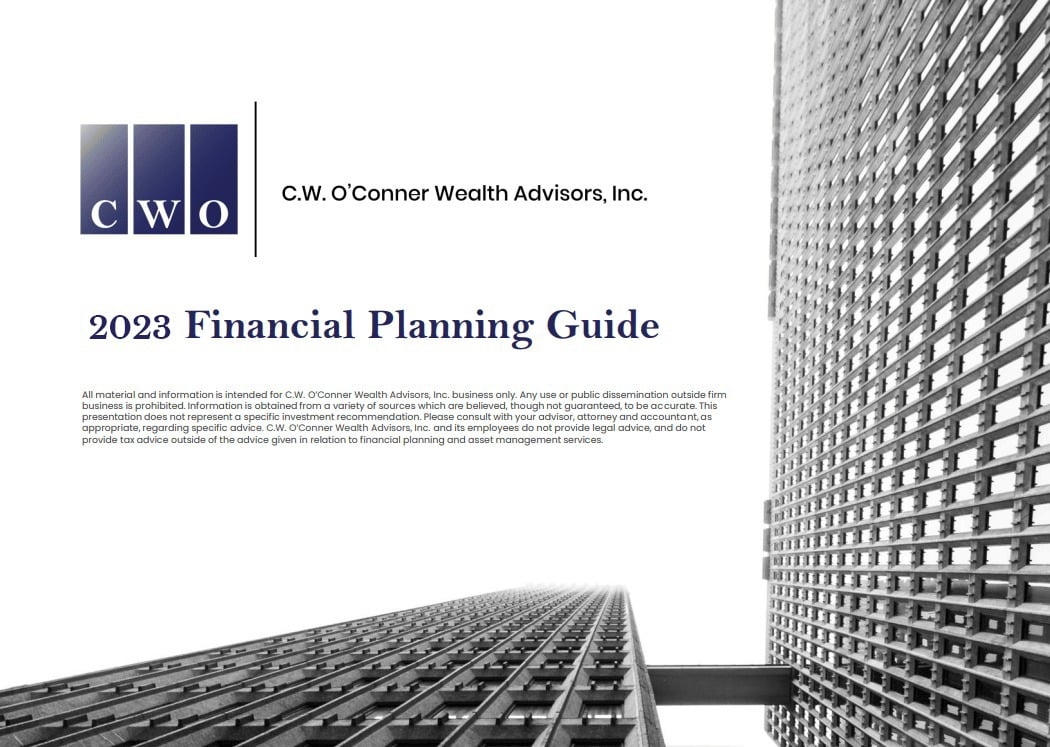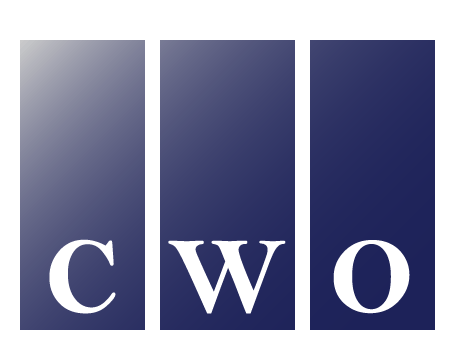
The beginning of a small business is exciting. It’s easy to get caught up in the thrill of improving, growing, and expanding your company into the future. However, along the way, little to no thought may be given to what happens after selling your business.
In the following guide, you’ll be taken through exit planning in detail. You’ll explore tailored strategies to meet goals that extend well beyond the day-to-day running of your business. Whether you envision kicking back on a beach, starting a new venture, or passing the torch to a family member, you’ll see what it takes to keep your entrepreneurial journey on the right path.
Table of Contents
- 1 What is an Exit Strategy for Small Business Owners?
- 2 What Can Derail An Exit Strategy For Small Business Owners?
- 3 Why is Holistic Exit Planning for Small Business Owners Important?
- 4 Exit Strategies For Small Business Owners
- 5 CW O’Conner Helps With Exit Planning For Small Business Owners
- 6 Download our 2023 Financial Planning Guide
What is an Exit Strategy for Small Business Owners?
An exit strategy is essentially a roadmap. It helps you as a small business owner prepare for the day you decide to reduce your involvement in your business or leave it altogether. An exit plan guides you in transferring your ownership. It also ensures you’re well-prepared financially for life after stepping away.
It can take years to properly position a business for sale. If you wait until you are forced to sell, you might not get the value you desire. Additionally, planning an exit can help preserve the legacy of your business. The right plan can keep your company’s values intact, even after you’ve left.
There are various strategies you can use in exit planning. However, you’ll want to use the one(s) most aligned with your business and personal objectives. For example, you may want to pass the business on to family members. In order to do this, your exit plan needs to be structured in a way that minimizes tax burdens, trains key employees, and supports a smooth transition.
What Can Derail An Exit Strategy For Small Business Owners?
You’ve worked hard on your business. That’s why you must consider the factors that can derail your ideal exit strategy. It’s not just about the market – your marriage, team dynamics, personal health, and even your untimely passing can make or break your business. Here’s a rundown of some risks you might not have considered:
- Divorce: A marital separation can jeopardize your business. If your spouse plays a key role, you’re left with a big gap if they leave after a divorce. Your focus may also shift to handling personal issues rather than business ones. This can lead to possible mismanagement. Furthermore, if you lack liquid assets, you may be forced to sell or close your business to cover the divorce settlement.
- Internal Disputes: Disputes inside your company can derail your business operations. Conflict often leads to personal issues, which hinders decision-making. Additionally, internal complaints and blaming can erode trust and collaboration.
- Disabilities: Disabilities can pose a serious threat to your exit planning. Should you become disabled, you may be physically unable to run or manage your business. This could result in your business losing value fast.
- External Stressors: External stressors can hinder your exit plan. Legal battles can drain time and money. Supply chain issues can halt operations. Your business needs to be nimble enough to navigate the unexpected.
- Passing Away: If you pass away suddenly, your small business may suffer. Without you, revenue may decline. Employees might struggle emotionally and become less productive. Your absence may also weaken customer relationships, harming your business’s reputation.
Why is Holistic Exit Planning for Small Business Owners Important?
Taking a holistic approach is vital for your exit planning. As a small business owner, you need to recognize that your business isn’t just an income stream. It’s also a significant part of both your identity and overall financial worth.
When you decide to exit your business, minimizing taxes, maximizing profits, and setting yourself up for long-term success are significant factors. Financial advisors, accountants, valuation experts, and attorneys will be invaluable resources for accomplishing these aims.
However, you and your professionals need to consider your personal goals that extend beyond your exit plan. You need to think about what you want to achieve with your proceeds and newfound time.
Exit planning creates a new stage of life. Maybe you want to give more to charity. Protecting your family’s legacy may become a top priority. Regardless, it’s imperative to consider the possibilities exiting your business can create. It’s also important to think about your desired lifestyle post-exit. Many small business owners still depend on their businesses to support their way of life.
Holistic exit planning helps you strategize not only in the here and now, but also in the long-term. It also puts the proper protections in place to mitigate the risks of divorce, internal disputes, disabilities, external stressors, and passing away. By teaming up with the right professionals, you’ll be more than prepared to take on this exciting chapter of your life.
Exit Strategies For Small Business Owners
As a small business owner, charting a course for the future is vital. You’ve put in hard work, and now it’s time to think about what’s next. Whether you want to pass the torch to your family, sell to your management team, or explore other options, having a sound exit strategy is crucial. Below, you’ll find various exit planning strategies to help you make better decisions about the next chapter in your entrepreneurial journey.
Family Succession
With a family succession, you’re transferring the ownership and management of your small business to a family member (e.g. child, sibling, etc.). It’s a strategy often used to keep a legacy intact. That said, to work properly, your succession may require a considerable amount of training and mentoring of next-in-line family members.
Pros:
Preserving Your Legacy: You can ensure your business continues within the family, keeping your legacy alive.
Streamlined Transition: If your family has been involved in the business, they’re likely familiar with how things work.
Maintaining Customer Relations: Customers may have built a relationship with your family. They may be more inclined to keep supporting your business if it remains family-run.
Cons:
Emotions: Family emotions could cloud your judgment. They could make it difficult to remain objective, causing you to put feelings ahead of what’s best for your business.
Narrower Talent Selection: Limiting succession to your family could mean missing out on potentially more qualified candidates. This could affect your business’s growth and competitiveness.
Family Feuds: Mixing family and business can sometimes ignite conflicts. This is especially true if family members have different visions or competing interests.
Management Buyout (MBO)
A Management Buyout (MBO) is a structured plan where your business’s management team pools resources to acquire a substantial part or all of your business. In MBOs, your management often works with financiers to acquire the necessary funds for the buyout. This form of internal acquisition is often seen as a way to ensure that the business continues to operate on its current trajectory.
Pros:
Faster Process: Compared to seeking external buyers, an MBO can be quicker since you are dealing with a known party.
Familiarity and Continuity: With an MBO, you’re entrusting your business to people who are already familiar with its operations. This can ensure a smoother transition and potentially less disruption for your employees and clients. This can be especially important if your lifestyle after exiting relies heavily on your business staying on track.
Potentially Favorable Terms: As you negotiate with your management team, who likely have a vested interest in the success of the business, you might find it easier to come to mutually favorable terms. This could include aspects such as payment structure, your involvement post-sale, or ensuring that certain values and practices are maintained.
Cons:
Limited Financial Gain: Your management team might not have the same financial resources as an external buyer. This could result in a lower selling price for your business.
Financing Challenges: Your management team might need to secure external financing to purchase your business. If they encounter difficulties, it could prolong the process or even result in the deal falling through.
Risk of Over-Dependence on the Owner: Sometimes, small businesses are highly dependent on you as the owner. In an MBO, if the management team lacks your unique skill set, the business may face challenges in sustaining its performance.
Sell To A Third Party
Selling to a third party usually means you’re looking for someone outside of your business to take over. This could be an individual, a group of investors, or another company. In this process, it’s important to engage in thorough market research, business valuation, and possibly hire a broker. This helps in understanding how much your business is worth and finding the right buyers. This strategy is often used by business owners looking for a complete exit strategy.
Pros:
Potential for Higher Financial Returns: When you sell to a third party, you may receive a higher price compared to other exit strategies. This is especially true if there are multiple parties interested in buying your business. Third parties may value different aspects of your business such as market share, intellectual property, or strategic fit, which can drive up the price.
Clean Break and Liquidity: Selling to a third party often allows for a cleaner break from your business. This is appealing if you’re looking to retire or move on to other ventures. You’ll likely receive a lump sum or structured payments, providing you with liquidity to pursue new aspirations.
Expanded Resources and Opportunities for the Business: Third-party buyers may bring additional resources and expertise to your business. This can present new opportunities for growth, expansion, and innovation that may not have been possible under your ownership.
Cons:
Loss of Control and Cultural Changes: Once you sell to a third party, you will lose control over the business. The new owners might make changes to the company culture, brand, or operations, which may not align with your vision.
Impact on Employees: A third-party buyer may restructure your business. This could lead to layoffs or changes in employment terms for your staff. If you have close relationships with your employees, this can be a significant drawback.
Complex and Lengthy Process: The process of selling to a third party can be complex and time-consuming. It typically involves negotiations, due diligence, and many legal formalities. During this time, confidential information about your business will be scrutinized. There’s also the risk of deals falling through even after investing significant time and resources.
Employee Stock Ownership Plan (ESOP)
In an Employee Stock Ownership Plan (ESOP), you create a trust into which you contribute shares of your company. These shares are then allocated to individual employee accounts. Over time, employees can buy shares and eventually own a significant portion (or all) of your business. This strategy not only provides a viable exit for you but also rewards employees by giving them a stake in the company.
Pros:
Preservation of Company Culture: Through an ESOP, your employees become owners. This can be an excellent way to preserve your company’s culture and values. Your employees are likely to have a strong understanding and commitment to your business and can help carry your vision forward.
Potential Tax Benefits: Implementing an ESOP can offer you substantial tax advantages. You might be able to defer capital gains taxes on the sale of your shares. An ESOP structure can also provide tax benefits for the company, making it a financially attractive option for your exit.
Employee Motivation and Retention: ESOPs can highly motivate your employees. It can lead them to be more invested in your company’s success. This can translate to increased productivity, greater loyalty, and lower turnover.
Cons:
Complexity and Cost: Establishing and maintaining an ESOP can be complex and expensive. There are substantial regulatory and administrative requirements with this strategy.
Limited Liquidity and Market Valuation: With an ESOP, you might not get the same level of liquidity or valuation as you would in an open market sale. The ESOP must purchase your shares at a fair market value.
Repurchase Liability: As the ESOP’s participants retire or leave the company, the ESOP is required to buy back their shares. This creates a repurchase liability. Managing this liability can be challenging, especially if your business has cash flow constraints.
Liquidation
With a liquidation, you close your business and sell the assets. It’s a step that is often taken if your business is no longer viable, can’t find buyers, or lacks successors. However, it can also be used if you’re looking to retire and no longer want the responsibilities associated with running a company. This strategy is more final compared to others and signifies the end of your business.
Pros:
Simplicity and Speed: Liquidation can be a quicker, less-complex process. You don’t need to find a buyer for the entire business. Instead, you can just focus on selling off assets.
Immediate Cash Flow: By liquidating assets, you can convert them into cash almost instantly. This can be beneficial if you need to settle debts or if you want to make a clean break. You can then use your proceeds for other ventures or personal use without the complications of financing or longer-term payout structures.
Cut Your Losses: If your business is not performing well or if you foresee significant challenges ahead, liquidation can be a way to cut your losses. Sometimes this strategy is the most pragmatic option for protecting your finances.
Cons:
Potential Lower Returns: When you liquidate, the goal is often to sell assets quickly, which might mean you won’t get the best price for them.
Impact on Employees and Stakeholders: If you liquidate, your employees will lose their jobs. Additionally, suppliers, customers, and other stakeholders might be adversely affected.
Loss of Potential Future Value: By choosing to liquidate, you forgo any potential future value. For instance, if market conditions improve, or if your business could have been turned around managerially, there could have been more value in selling it later on.
CW O’Conner Helps With Exit Planning For Small Business Owners
At CW O’Conner, we understand that as a small business owner, your business is more than just a company. It’s a testament to your devotion, hard work, and vision. However, we also understand how easy it is to overlook an exit plan that protects you and your loved ones when the time comes to step away.
In the end, it’s not just about the numbers. We know that your exit affects the lives of your employees, community, and family. Our holistic understanding ensures that both financial and non-financial aspects are taken into consideration so that the impact of your exit is both positive and meaningful.
The sooner you begin your exit planning, the better positioned you will be to weather the unexpected and seize opportunities. Don’t let the complexities and challenges stop you from securing the future you envision for yourself and your business. Reach out to our team today to discuss this further.
The opinions and analysis expressed herein are based on C.W. O’Conner Wealth Advisors, Inc. research and professional experience and are expressed as of the date of this report. Please consult with your advisor, attorney and accountant, as appropriate, regarding specific advice.
Download our 2023 Financial Planning Guide







